It is very rare that a book can come out and single-handedly change humanity’s understanding of the world. But in 1543, De revolutionibus orbium coelestium (“On the Revolutions of the Heavenly Spheres”) did just that. It was a book by Polish astronomer Nicolaus Copernicus in which he presented his model of a heliocentric Universe – one which did not place the Earth at the center of it all, anymore. Instead, it had been replaced with the Sun which was now, more or less, at the heart of the Universe, and all the stars and planets in the sky revolved around it.
It was a revolutionary thought, one that challenged well-established notions that had been around for over a millennium. It wasn’t immediately accepted, or even understood, for that matter. But it served its purpose in presenting an alternative to a grand idea that seemed immovable from the public consciousness.
Many others followed who popularized, improved and heavily modified the heliocentric model first outlined by Copernicus, but it still remains to this day one of the core concepts of our reality.
Early Life
Nicolaus Copernicus, or Mikołaj Kopernik in its original Polish, was born on February 19, 1473, in the city of Toruń in the recently established territory of Royal Prussia. Prior to this, the region had been part of the State of the Teutonic Order, formed by crusader knights during the 13th century. However, following the Second Peace of Toruń in 1466, Royal Prussia became an autonomous dependency of the Kingdom of Poland.
Copernicus was the son of Nicolaus the Elder and Barbara Watzenrode. According to records, Nicolaus’s father was a successful merchant, as was his grandfather on his mother’s side. Originally established in Krakow, Nicolaus the Elder decided to relocate the family to Toruń before the birth of his namesake. Nicolaus was the youngest in the family with an older brother and two older sisters.
The family last name comes from Koperniki, the village where his paternal ancestors came from. Throughout his lifetime, Copernicus was rather lax when it came to the spelling of his name and used, at least, three different variants.
Studies in Poland
It is unlikely that Copernicus would have had the opportunity to pursue a life of science if not for his maternal uncle, Lucas Watzenrode the Younger. The senior Nicolaus died when his son was ten years old and his uncle took him and his siblings in his care. He ensured a good education for young Copernicus. There are no records to suggest exactly what that entailed, particularly in his early years, but historians have speculated that the young man most likely followed an educational path similar to that of his uncle. This would involve studies at St. John’s School in Toruń, and then the Cathedral School in Włocławek in order to prepare Copernicus for entrance to the University of Krakow, Watzenrode’s alma mater.
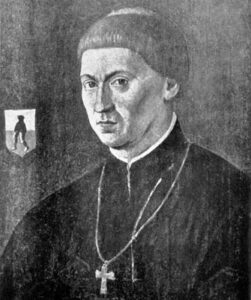
We do know that Copernicus enrolled in the school in Krakow, today called the Jagiellonian University, in the winter of 1491. Surprisingly, he first studied arts, but also decided to learn mathematics in order to take advantage of the fact that the school had some of the best mathematicians in Europe. This was also the time when he started going by the Latin version of his name instead of his Polish birth name.
One of his educators was Albert Brudzewski, a math teacher who also liked to give lectures on astronomy and Aristotelian philosophy. He was likely among the first to spur young Copernicus’s interest in studying the stars. The Polish prodigy quickly proved to have a knack for mathematics and astronomy and it was during his time at the University of Krakow that he wrote his first observations on the subjects.
Nicolaus left the university in 1495 without a degree and returned home to his uncle. A few years earlier, Lucas Watzenrode the Younger became the Prince-Bishop of Warmia, a special region that was under direct authority of the pope. Unsurprisingly, he wanted to secure a canonical position for his nephew. However, for unclear reasons, Copernicus’s assignment was delayed so, instead, his uncle sent him to continue his studies in Italy at the Bologna University.
Continued Education in Italy
Technically, Copernicus went to Italy to study canon law so he could advance his position in the church, something that would have been almost guaranteed given his uncle’s high standing. However, in the years spent in Bologna, Nicolaus became more interested in continuing his studies of astronomy and the humanities. There, he met Domenico Maria Novara, a famed astronomer of his time who became Copernicus’s teacher and even took him on as an assistant.
Copernicus traveled for a bit to Rome where he spent the jubilee year 1500. By this point, he had become proficient enough in astronomy that he started giving lectures. The next year, the young scientist returned to Warmia, but the stay was short-lived. He convinced the Church that he should also study medicine, so he was given another two-year leave to go back to Italy. This time, he enrolled at the University of Padua from 1501 to 1503. Like before, Copernicus was not one to limit his knowledge to the intended curriculum and pursued multiple interests which, of course, included astronomy, but also ancient Greek which would give him access to many of the seminal astronomical works from ancient times.
Back to Warmia
Despite all of his extracurricular activities, the second time around in Italy Nicolaus managed to graduate as a Doctor of Law. With his studies complete, the 30-year-old Copernicus returned to Warmia where he would spend most of the next 40 years. He became his uncle’s right-hand man. Officially, he was the Prince-Bishop’s assistant and physician, although he was involved with most of the duties of his uncle, be they religious, economical, political, or administrative. It is unclear if he was ever actually ordained as a priest, but it does not seem like he ever took orders in the Catholic Church.
With all of his responsibilities, Copernicus was a busy man and was on the road a lot as part of his uncle’s retinue. Even so, in the eight years or so that he served Lucas Watzenrode until his death, he still managed to write a small precursor to his later work that would revolutionize astronomy.
The Almagest
We should probably take a minute to look at humanity’s understanding of the Universe prior to Copernicus to truly get a sense of how influential he was in the grand scheme of things.
Before he published his seminal work, the astronomical world believed in a geocentric model. This meant that the Earth was at the center of the Universe and everything else – moons, planets, stars, and our Sun – they all orbited us.
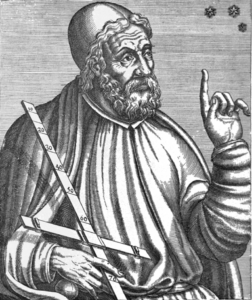
This belief appeared in many ancient cultures, including the Greeks. They all presented, more or less, the basic tenets of geocentrism, but there was no widely-accepted system. That is until an astronomer from Alexandria named Claudius Ptolemy wrote the Almagest sometime around the mid second century AD. A quick note here: even if he is sometimes referred to simply as Ptolemy and he was from Alexandria, he should not be confused with any of the members of the Ptolemaic Dynasty that ruled over Egypt for almost 300 years and also included Cleopatra.
The astronomer wrote his seminal work which he called Mathematike Syntaxis or The Mathematical Compilation. Despite its name, it was mainly about the motions of the stars and planets and, as it grew in influence, it became known as The Greatest Compilation. The name was then shortened to The Greatest and, later, when it made its way into other cultures, it was more commonly referred to by its Latin transliteration of Almagest.
Although the Almagest consisted of 13 books, it had five main points. The celestial realm was spherical. Our Earth was a sphere, at the center of this realm, and did not move. And, in relation to the distance to all the fixed stars, the Earth had no appreciable size and must have been treated as a mathematical point.
Ptolemy’s ideas were popular enough that, eventually, the Ptolemaic model became synonymous with geocentrism. It was the accepted truth for 1,300 years, but it still had its detractors. Even before Copernicus, there were other astronomers, particularly in the medieval Arab world, who saw flaws in Ptolemy’s system. However, none of them went so far as to propose an alternative that completely negated it.
The Commentariolus
Because the Almagest had been around for well over a thousand years and traveled from culture to culture, it has been translated many times over from one language to another. Written originally in Greek, it was converted into Arabic by Muslim scholars and, later, medieval Europeans used that version and translated it into Latin. Many astronomers prior to Copernicus thought that it might contain inaccuracies not necessarily due to Ptolemy’s faulty ideas, but due to poor translations.
One of them was a German scientist called Regiomontanus. He obtained the original Greek work and concluded that there were errors, in fact, which belonged to Ptolemy rather than the translators who came after him. He published the Summary of Ptolemy’s Almagest several years before Copernicus was born.
The Polish astronomer read Regiomontanus’s book. He had also been spurred on by his teacher in Bologna, Domenico Maria Novara, who was another skeptic who doubted Ptolemy’s infallibility. Nicolaus was determined to study the ancient Greek astronomer himself and draw his own conclusions.
Sometime before 1514, Copernicus wrote a treatise called the Commentariolus (Little Commentary). Consisting of eight chapters, it made arguments for seven postulates that laid down the groundwork for his heliocentric model. Crucially, they said that the Earth is not the center of the Universe and that there is no fixed point around which all other celestial bodies orbit.
The paper got some things right, such as the fact that the Moon is the only sphere that orbits the Earth and that the distance from the Earth to the Sun is insignificant compared to the distance to all the other stars. Copernicus also placed the known planets in the right order from the Sun and calculated their orbital periods with pretty impressive accuracy.
It also got some things wrong, such as placing the Sun near the center of the Universe and concluding that the stars are immovable. Even so, these radical ideas were very far removed from the accepted model of Ptolemy.
Copernicus saw his Commentariolus as just an outline for a much grander work. Therefore, he did not make many copies of his treatise and only shared it with a few other people. It was never published during his lifetime.
Among those who received a copy of the paper, the Commentariolus garnered a good reception. It was of particular interest to Nikolaus von Schönberg, the Archbishop of Capua and later a Cardinal of Pope Paul III. In 1536, he wrote a letter to Copernicus requesting a copy of his treatise. He praised the astronomer’s “so fine a talent” and expressed great interest in his revolutionary ideas. Copernicus later included this letter in his magnum opus, De revolutionibus orbium coelestium.
In the Meantime
The Polish scientist was not one to rush things. After he wrote the Commentariolus, he would spend another two decades working on his main treatise. It would be another decade after that that it would finally get printed, in the same year that Copernicus died.
He was mainly concerned with his astronomical observations, but Copernicus also had plenty of administrative duties to attend to which ate up a lot of his time. His uncle, the Prince-Bishop of Warmia, died in 1512 and Nicolaus participated in the election of his successor. There were also other issues that required his attention such as renewed war with the Teutonic Order and internal strife among the leaders of Warmia over how loyal and servient they should be towards the Polish Crown.
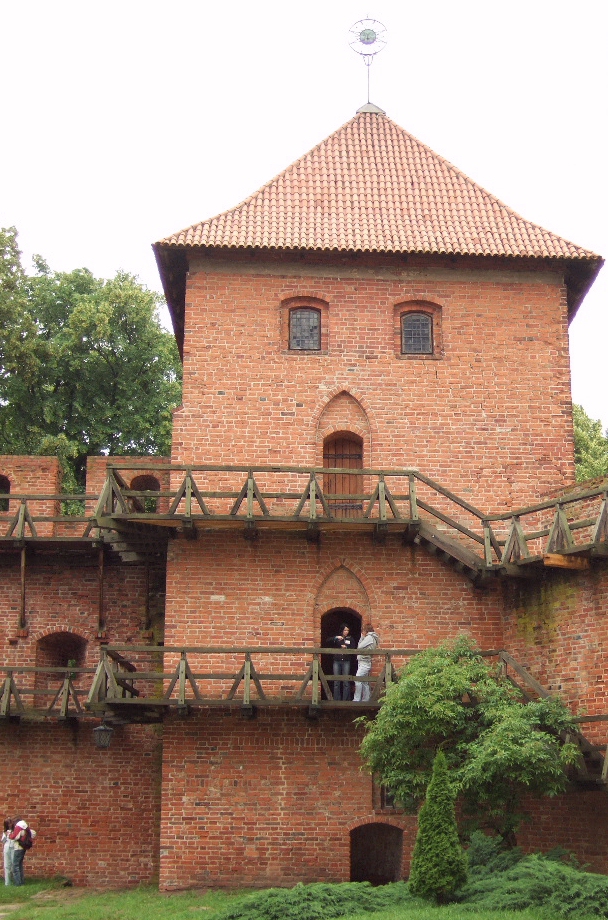
Around this time, Copernicus also relocated permanently to the city of Frombork where he lived and worked for the remainder of his life. He not only had a house, but was also allowed to purchase the northwestern tower within the stronghold walls to use as his observatory.
Copernicus the Economist
Often overlooked is Copernicus’s contribution to economics. As mentioned before, he wore many hats as his uncle’s right-hand man. When Lucas Watzenrode passed away, his nephew proved himself adept enough that he continued to be a major influence in the administration of Warmia. In 1526, he was asked by King Sigismund I of Poland to write a paper on monetary reform which was a hot button topic at the time.
Copernicus wrote Monetae cudendae ratio (“On the Minting of Coin”). The gist of it is exemplified by the principle that “bad money drives out good”. In this case, “good” money refers to coins whose face value is roughly the same as their commodity value granted by the value of the metals they are made from. “Bad” money refers to coins that not only have a significant disparity between the two values, but are also put in circulation alongside “good” money.
A bit unfairly, the postulate is known today as Gresham’s Law, named in the 19th century after 16th century English financier Sir Thomas Gresham. However, Copernicus published his work on the subject decades before Gresham.
Delays
By the early 1530s, Copernicus’s seminal work De revolutionibus orbium coelestium was finished, more or less. He kept on making changes to it until his death, but it could have been ready for printing, if he desired it. However, the Polish astronomer kept on delaying the publishing of his book and, even today, scholars argue over the true reason for this behavior.
Some feel like it had to do with the Church and that Copernicus feared the consequences that might occur if his work was deemed heretical. After all, things did not work out so well for one of the strongest advocates of Copernicanism, Galileo. Almost a hundred years later, his ideas were considered heresy by the Roman Inquisition because heliocentrism contradicted the Holy Scripture and, as a result, Galileo was forced to recant his views and he spent the last decade of his life under house arrest.
Others believe that Copernicus was reticent to publish his findings because he feared any kind of criticism or outright rejection of his ideas.
The Book
Ever since Copernicus wrote the Commentariolus, he was careful to share his work only with friends and other trusted astronomers. He did the same thing with De revolutionibus orbium coelestium prior to printing, but word of mouth spread and others heard of it. Bishops knew about it. So did the Pope. Initial reactions seemed to be either of approval or indifference. There were plenty of people, astronomers included, who disagreed with his ideas, but no one was beating down the door of his house to burn Copernicus at the stake just yet.
A contributing factor had to be the fact that his book was not exactly “reader friendly”. Copernicus believed that “mathematics is written for mathematicians” so laymen were unlikely to get much out of it, even if they read it. It was up to other astronomers who came afterwards to champion his cause and bring Copernican beliefs to the wider masses (and suffer the consequences for it).
The basic idea was the one initially outlined in Commentariolus. According to heliocentrism, the Earth was no longer special – it was just another planet that orbited the Sun.
Rheticus
One of the aforementioned astronomers who became followers of Copernicus was his pupil, Georg Joachim de Porris, better known as Rheticus.
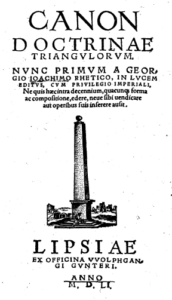
When he was young, Rheticus obtained the patronage of Philipp Melanchthon, an influential Protestant reformer and Martin Luther’s “right-hand man”. He arranged for the young scientist to go study with some of the greatest astronomers of the day, but it was Copernicus who garnered his true interest. In fact, he might have played the most important part in making sure that De revolutionibus orbium coelestium saw the light of day, after Copernicus, of course. He kept on pestering and encouraging his teacher to publish his work.
In 1540, with the permission of Copernicus, Rheticus wrote and published Narratio Prima (“The First Report”). It was an abstract of his teacher’s heliocentric theory and served well as an introduction to Copernicus’s book which would be released a few years later. So, yes, the first ever published work on the Copernican model did not even belong to Copernicus. Even so, nobody raised their pitchforks in anger when this work came out, and this proved to be instrumental in finally convincing the Polish astronomer to put his own book into print.
Ad Lectorem
In 1543, Copernicus finally consented to having his magnum opus published. He sent it via Rheticus to German printer Johannes Petreius and the project was overseen by theologian Andreas Osiander. He had previously conversed with Copernicus and showed an interest in his hypotheses, but it is not clear if he undertook this task on his own or at someone else’s behest.
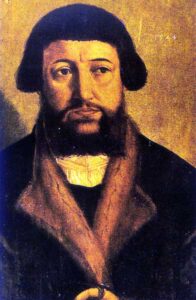
The book was divided into six sections, mimicking closely the layout of Ptolemy’s Almagest. It was dedicated to Pope Paul III and contained a preface which argued that mathematics was the basis used for these new ideas and not physics so mathematics should be used to understand them. These were all efforts by Copernicus to make his work less controversial in the eyes of the Catholic Church.
When De revolutionibus orbium coelestium finally came out, Copernicus couldn’t help but notice that the preface also contained a letter that he did not write or even know about. It was titled Ad lectorem de hypothesibus huius operis (“To the reader concerning the hypotheses of this work”) and had actually been written by Osiander and added to the book without Copernicus’s consent.
The addition advised that the ideas put forward in the book are not necessarily true, or even probable, for that matter, but they are useful for making observations and calculating distances. It anticipated that scholars would be “deeply offended” by the notion that the Earth moves while the Sun is at rest in the center of the Universe and came to the defence of the author who “has done nothing blameworthy”.
The thing about the letter was that Osiander wrote it anonymously and did not sign anything at the end. To the reader, it looked like Copernicus himself was the author of Ad Lectorem who, seemingly, didn’t believe his own theories.
Reactions and Receptions
Copernicus wasn’t around for long to see the impact of his work. He died of a stroke soon after De revolutionibus orbium coelestium was published in his home in Frombork. He was 70 years old and a legend says that he passed away right after being presented with the final printed pages of the book he worked on for most of his life.
As far as Ad Lectorem was concerned, Rheticus and supporters of Copernicus made sure that others knew that the Polish scientist was not the one who wrote it. Osiander’s reason for writing it still remains a mystery, though. Some argue that he himself did not believe in Copernicus’s theories and was offended by their heretical implications and wanted to dismiss the book as a legitimate work of science. Others believe the exact opposite – Osiander tried to minimize the negative reactions to the book as much as possible. Your guess is as good as anyone’s regarding his true intentions.
De revolutionibus orbium coelestium won’t be cracking any best-seller lists anytime soon. It sold terrible because, as we mentioned before, it was very technical and not meant for anyone who didn’t have a solid background in mathematics or astronomy. The few copies that were sold, though, reached the right people and, in the decades that followed, many scientists were converted to Copernicanism. Computations using this new model were, unsurprisingly, more accurate, and proved very useful for new astronomical tables.
Also unsurprising was the religious reaction. Protestants were the ones most fired up against Copernicus. Martin Luther objected that his work went against Holy Scripture that said that “Joshua bid the sun to stand still and not the earth”. He believed Copernicus was a fool who wanted “to turn the whole art of astronomy upside-down”. The Catholic Church had a similar, but much slower reaction, and put De revolutionibus orbium coelestium on the Index of Forbidden Books in the early 17th century, almost 70 years after it originally came out.
Try as they might, though, the idea of heliocentrism was now in the open. This probably meant little to the common man, but more and more scientists looked at it and realized that it made sense. It was a bell that could not be unrung and our understanding of the Universe grew and evolved from that premise to what we have today.



